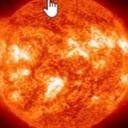Yahoo Answers is shutting down on May 4th, 2021 (Eastern Time) and beginning April 20th, 2021 (Eastern Time) the Yahoo Answers website will be in read-only mode. There will be no changes to other Yahoo properties or services, or your Yahoo account. You can find more information about the Yahoo Answers shutdown and how to download your data on this help page.
Trending News
Assuming climate change were real, would temperature differences become more pronounced?
I'm not here to state that climate is/isn't real, but out of curiosity, if were to be real, then would cold fronts become colder while warm fronts might become warmer? There have been cold records in the Midwest this winter, while record warm temps will likely invade other parts of the world. But is it possible that not only will will the jet stream fluctuate more dramatically, but the arctic can get colder while places near the equator might get warmer? I guess that that could be a possibility if ridges of high and low pressure become more sustained. And is it possible that the fluctuations of cold and warm throughout even a single month for a given location might somehow change, and how would it change? If we were to study the fluctuations, would we notice that the waves on the graph get more pronounced or that the change would flatten out the waves?!
Would winters become milder and longer, or colder and longer, or maybe winters might become milder and shorter, or colder and shorter?! And what about the other seasons? I've been listening to news from Europe, and the forecaster there supposedly forecast winters that are more brutal (for Northern Europe) but that have a late start. And there's a treasure trove of more topics that you could investigate.
Obviously, this is opening the Pandora's box of knowledge
8 Answers
- JimZLv 73 years ago
Greenhouse gases should bump up the temperature but decrease the temperature gradient. This is demonstrated on overcast high humidity days that tend to have warmer lows and lower highs. Yesterday morning at 5:30, it was 60 Deg F and I think the high only got to around 75 Deg F. Since it isn't very alarming to have moderating temperatures, we get theories of increased storms, etc. Global moderation wouldn't help a leftist political agenda.
- MikeLv 73 years ago
It's a theory. But remember this theory is being thrown out without a higher mean temperature around which this higher variability is supposed to happen. This theory has been around for at least ten years, when the cold weather was trampling over the global warming narrative. There is no theory that suggests CO2 will cause higher variability without increasing the temperature.
- Climate RealistLv 73 years ago
Everything will become warmer.
That doesn't mean that winter will stop. If it gets to 20 bellow zero now, and Earth warms by one degree, then, it will get to 19 below zero.
- Wage SlaveLv 63 years ago
Droughts, floods, and even the dreaded polar vortex were blamed on global cooling 40 years ago. None other than a climate scientist from the University of East Anglia weighed in on the topic. Makes you wonder how the current predictions will hold up...
- How do you think about the answers? You can sign in to vote the answer.
- Anonymous3 years ago
No convincing relationship has been established between warming over the past 100 years and increases in extreme weather events.
Meteorological science suggests just the opposite: A warmer world will see milder weather patterns.
- $@!ar W!ndLv 63 years ago
Possibly the best way to answer your questions is to highlight the Climate Change event, Little Ice Age, where Climate Scientists believe the Earth is headed for in the coming years.
Several centuries ago, the Earth underwent a very dramatic shift in climate. This period was known as the Little Ice Age. This period coincided with periods of minimal sunspot activity called the Maunder Minimum from 1645 to 1715 A.D. But how did the climate change during the Little Ice Age and why was it so dreaded?
Average temperatures dropped approximately 1.5º C below current levels. Many rivers froze and during the spring thaw created massive ice dams generally along the bends in rivers. These caused major floods and when the ice dams burst caused general destruction of river towns. The cold and extreme weather caused a reduction of the growing season. This caused disastrous harvest failure. Hunger became the heart of this crisis. Plagues, smallpox, typhus, measles and fever belong to a cluster of deadly diseases that correlate closely with harvest yields. Little Ice Age conditions that produced famines increased the frequency and intensity of these diseases. Flooding created swamplands that became mosquito breeding grounds and introduced tropical diseases such as malaria throughout Europe.31 During the Little Ice Age, glaciers expanded rapidly in Greenland, Iceland, Scandinavia and North America. Glaciers expansion destroyed alpine settlements. It also caused vast tracts of land to become uninhabitable. The Arctic ice pack expanded into the far south. Several reports describe Eskimos landing their kayaks in Scotland. The Viking colonies in Greenland were abandoned altogether, as were many Inuit communities.32 And into this mix entered almost continuous warfare, rebellions and revolutions. In a short timeframe, when it was all done, a third of the world’s population perished. Extreme weather events were common during the Little Ice Age and frankly terrifying. They included great storms, deep and long lasting droughts and massive floods. The Nile River Inundations, the India Monsoons and China Loess were all affected.

- a2yarLv 73 years ago
depends on location. the arctic is getting warmer faster than the equator for example. the swings of weather are getting more pronounced as more energy is added in.
- ?Lv 73 years ago
That is correct. the variations through the year and from place to place are getting greater. Summers are hotter and winters are colder and snowier than the prior long term average. The extra warmth is putting way more water into the air in the tropics and when that meets cold arectic air, there is more snow than the historic norm.






